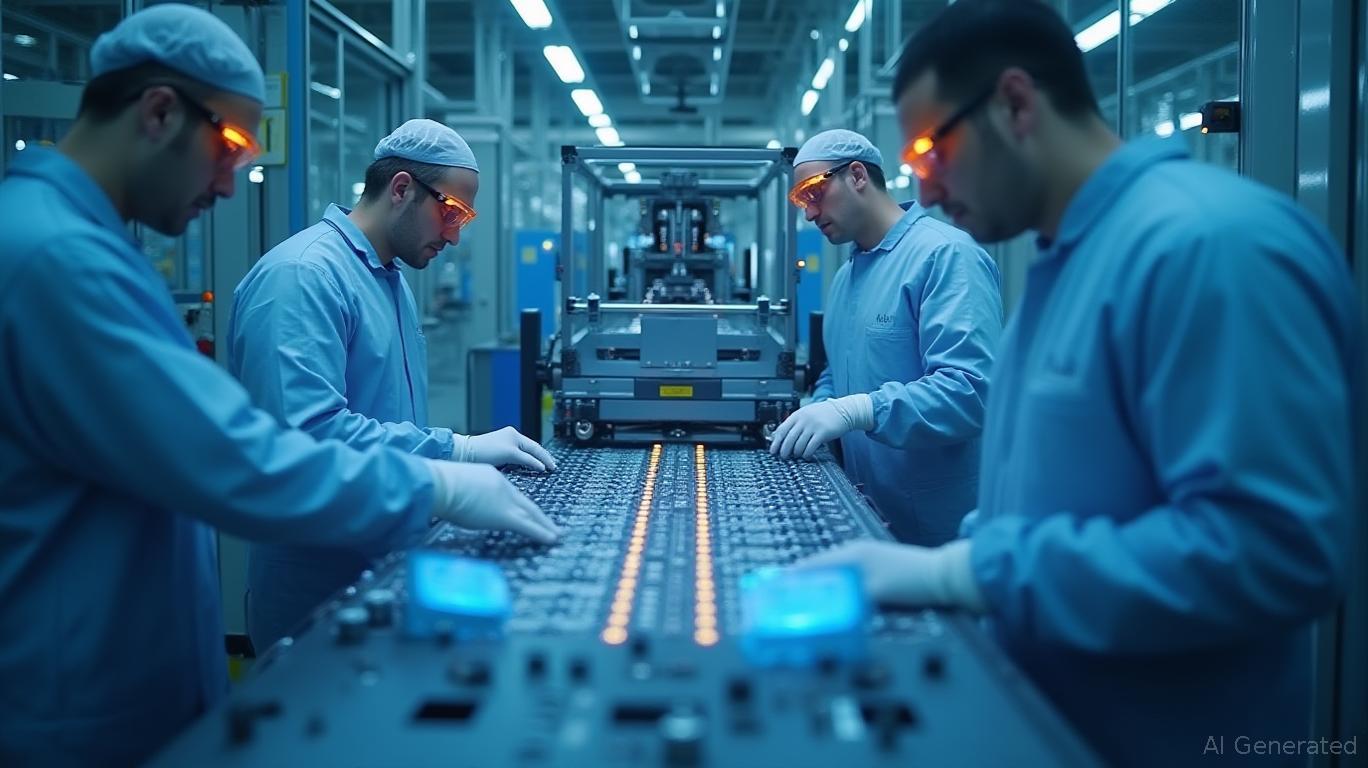Micron Technology (MU): Navigating the Memory Chip Renaissance
As
(MU) prepares to report its Q3 FY2025 earnings on June 25, the semiconductor industry is abuzz with optimism. Analysts have raised price targets aggressively over the past month, driven by surging demand for AI-driven memory solutions and data center infrastructure. With Micron's High Bandwidth Memory (HBM) chips at the heart of this momentum, the company stands at a pivotal juncture in its evolution as a leader in the $100 billion AI semiconductor market. Let's dissect the factors fueling this renaissance and evaluate the investment case.The AI Catalyst: HBM3E and Data Center Demand
Micron's HBM3E technology—critical for NVIDIA's Blackwell GPUs and AMD's Instinct GPUs—is the linchpin of its growth story. These chips, which deliver 60% higher bandwidth than prior generations, are now in volume production, enabling Micron to surpass $1 billion in HBM revenue in Q2 FY2025 alone. Analysts project HBM's total addressable market to hit $100 billion by 2030, with Micron already securing a dominant position.

The data center segment is equally transformative. Hyperscalers like AWS and Google are ramping up server deployments, driving demand for Micron's DDR5 and HBM products. UBS noted that server DDR5 demand has surged, with average selling prices (ASP) up 7% in Q2 and expected to rise another 3% in Q3. This stability in DRAM pricing contrasts sharply with the volatility seen in NAND, where Micron is strategically shifting capacity toward enterprise and hyperscaler segments.
Analyst Consensus and Price Target Upgrades
Analysts have been quick to recognize Micron's strategic advantages, with 17 “Buy” ratings and an average price target of $124.89, implying a 2.5% upside from current levels. Key upgrades include:
- UBS (June 5): Raised the price target to $120, citing robust DDR demand and HBM's role in NVIDIA's AI infrastructure. UBS highlighted Micron's ability to capitalize on HBM's scarcity, with pricing projected to rise 11% in 2025.
- Wedbush (June 20): Increased its target to $150, emphasizing Micron's leadership in AI memory solutions and the potential for $200 billion market cap if HBM adoption accelerates.
- Citi & Stifel: Both reiterated “Buy” ratings with $130 targets, noting margin improvements and the likelihood of upside in Q3 estimates due to strong bit shipments.
The highest target of $200 (from DBS) reflects bullishness about Micron's 1γ DRAM node, which leverages EUV lithography to boost power efficiency and bit density by 30%.
Risks and Challenges
Despite the optimism, risks linger. NAND volatility remains a concern, with Q2 revenue down 17% due to weak consumer demand. While Micron plans to reduce NAND wafer capacity by 10% by year-end, NAND margins could continue to pressure earnings. Additionally, AI demand is not immune to setbacks—delays in Google's TPU v6e/v7 could temporarily slow HBM shipments.
Investment Outlook and Final Thoughts
Micron's Q3 results will be a litmus test for its AI narrative. Analysts project $8.84 billion in revenue (up 30% YoY) and $1.59 EPS (a 156% jump), with gross margins stabilizing at 36.5%. A positive surprise on HBM revenue (>1.5 billion) and DRAM ASP trends could push shares toward $130–$150. Conversely, a miss may trigger a 15–20% correction.
The long-term case remains compelling. Micron's CHIPS Act-funded $150B U.S. DRAM plant and HBM4E roadmap (60% bandwidth improvement over HBM3E) position it to dominate the AI infrastructure market. Investors should consider:
- Buying on dips below $115, with a $120–$125 target as a near-term range.
- Avoiding overexposure until Q3 results confirm margin stability.
- Monitoring NAND supply discipline and HBM adoption rates.
In conclusion, Micron's memory chip renaissance is real, but execution matters. For investors willing to weather short-term volatility, this could be a generational opportunity in the AI semiconductor boom.
Final Take: Micron's HBM3E and data center dominance make it a core holding for AI investors. Monitor earnings closely, but position for a multiyear growth story.

Comments
No comments yet